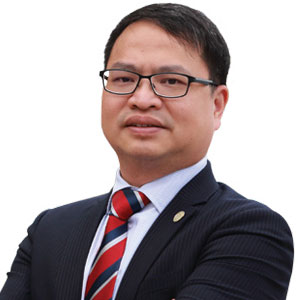THANK YOU FOR SUBSCRIBING

TLS International School Steering Education into the Digital Age
Tabitha Lim, Principal and Director Of Curriculum And Instruction, Tls International School

Tabitha Lim, with 13 years of experience in the field of education, serves as both Principal and Director of Curriculum and Instruction at TLS International School. Her leadership is marked by a commitment to a holistic approach to student development, focusing on building strong relationships with parents and stakeholders while simultaneously driving academic excellence. Lim actively evaluates the school’s programs, consistently seeking ways to enhance the curriculum and explore the implementation of new educational trends.
In a recent interview with APAC CIOoutlook, Lim discussed the critical role of integrating skills-focused education with technological advancements.
Challenges in Education: A Balanced EdTech Approach
Our school is a small, self-funded institution, which presents challenges in allocating substantial funds for new technology. We have primarily relied on using our existing resources, such as laptops and students’ personal phones. Despite this, we have faced resistance from parents concerned about their children’s excessive screen time.To mitigate these concerns, we have adopted a balanced approach to technology integration. We incorporate brief technology-based activities into our curriculum, including ten-minute quizzes and twenty-minute research tasks. Additionally, we encourage students to collaborate with their parents on technology-related projects at home. This involvement of parents not only helps address their concerns but fosters a positive and engaging learning environment.
Focusing on Initiatives: Technology IntegrationHistorically, our school has placed a heavy emphasis on academic rigor, often equating success with high performance on exams. This year, we embarked on a transformative journey to revamp our curriculum. We introduced a greater number of formative assessments and reduced the overall weight of exams to better reflect the value of day-to-day classroom work.
In addition to curriculum changes, we strengthened our commitment to digital safety and responsible technology use. We launched workshops focused on managing digital footprints and understanding online risks. The first half of the year was dedicated to educating students about safe technology practices.
As the year progressed, we shifted to a more student-led approach. We encouraged students to explore innovative ways to apply technology across their subjects, moving beyond traditional tools like Canva and PowerPoint.
Concurrently, we expanded professional development opportunities for teachers, empowering them to discover and integrate new features of our technology into their teaching. This dual approach not only enhanced our educational model but aligned with our goal of fostering a more engaging and adaptive learning environment.
Emerging Trends: Expanding Student’s Horizons through AI and Virtual Reality
The potential of AI and virtual reality is being actively explored as transformative tools in education, offering promising prospects for broadening student horizons. AI, for instance, holds substantial promise for English language learners or students with learning disabilities by providing tailored support. However, given that AI regulation is still in its infancy, cautious steps are being taken toward its integration. Over the next five years, anticipated advancements are expected to significantly improve the safety and reliability of AI applications for student use.
-
We encourage students to collaborate with their parents on technology-related projects at home. This involvement of parents not only helps address their concerns but fosters a positive and engaging learning environment.
Virtual reality opens up exhilarating opportunities for immersive learning experiences. It offers a unique advantage for students who may not have the opportunity to travel or experience different environments. For example, while engaging with geography lessons, students can don VR headsets to traverse snowy landscapes or desert expanses—environments not available locally—thereby enriching their learning with vivid, tangible experiences. This integration of virtual reality into the curriculum not only enhances understanding but ignites student imagination and curiosity about the world.
Guidance to Educators: Ensuring Safety and Reliability
Pursuing a doctorate at Johns Hopkins has immersed me in deep discussions about technology and its evolving role in education. A key principle that often emerges is the importance of conducting thorough research before embracing new technologies. Delving into evidence-based studies and consulting with experts are essential steps to ensure that any technological integration is well-informed.
The potential risks that certain technologies may pose to student safety or their propensity to exploit children cannot be overlooked. It’s crucial to strike a balance, ensuring that the technology is not only effective but also safe and appropriate for student use. Its accessibility and adaptability for teachers play a significant role. Even the most advanced technology can lead to poor outcomes if teachers are not properly trained in its application.
Therefore, the commitment to safeguarding student welfare and ensuring optimal use of technology is paramount. Comprehensive research is indispensable to fully understand these dynamics and make informed decisions regarding technology implementation in educational settings.
Weekly Brief
I agree We use cookies on this website to enhance your user experience. By clicking any link on this page you are giving your consent for us to set cookies. More info
Read Also













